
Discover the Historic Heart of Colombo: Fort
Explore Fort in Colombo, Sri Lanka - a captivating blend of colonial heritage, bustling markets, and modern landmarks, set against the backdrop of the Indian Ocean.
Fort, located in Colombo, Sri Lanka, is a bustling neighborhood steeped in history and rich in cultural heritage. Once a fortified area during the Portuguese, Dutch, and British colonial periods, Fort today is a blend of old-world charm and modern vibrancy. It is home to some of the city’s most iconic landmarks, offering a unique glimpse into Colombo's storied past and its dynamic present. Begin your exploration at the Colombo Fort Railway Station, a colonial-era structure that serves as a gateway to the neighborhood. From here, you can walk to the Old Dutch Hospital, one of the oldest buildings in Colombo, now transformed into a stylish shopping and dining precinct. The cobblestone pathways and colonial architecture make it a delightful place to unwind and enjoy a meal or a cup of Ceylon tea. A stroll through the streets of Fort will reveal an array of architectural marvels, including the Clock Tower, the General Post Office, and the World Trade Center, which towers over the skyline. Don’t miss a visit to the President’s House, a symbol of Sri Lanka’s political history. Fort’s proximity to the bustling Pettah Market also makes it an ideal starting point for those looking to dive into Colombo's vibrant street life and shopping scene. For a moment of tranquility, head to the Galle Face Green, a sprawling seaside urban park that offers stunning views of the Indian Ocean. It's a perfect spot to relax and watch the sunset after a day of historical exploration. Fort in Colombo is not just a neighborhood; it’s a journey back in time, blended seamlessly with the pulse of modern city life.
Local tips in Fort
- Visit the Old Dutch Hospital early in the morning to avoid crowds and enjoy a peaceful breakfast.
- Wear comfortable shoes as Fort is best explored on foot.
- Carry a bottle of water and wear sunscreen, especially if you plan to walk to Galle Face Green.
- Consider taking a guided historical tour to fully appreciate the rich history of the area.
- Check the opening hours of the President’s House and other historical buildings as they may vary.
Discover the Historic Heart of Colombo: Fort
Fort, located in Colombo, Sri Lanka, is a bustling neighborhood steeped in history and rich in cultural heritage. Once a fortified area during the Portuguese, Dutch, and British colonial periods, Fort today is a blend of old-world charm and modern vibrancy. It is home to some of the city’s most iconic landmarks, offering a unique glimpse into Colombo's storied past and its dynamic present. Begin your exploration at the Colombo Fort Railway Station, a colonial-era structure that serves as a gateway to the neighborhood. From here, you can walk to the Old Dutch Hospital, one of the oldest buildings in Colombo, now transformed into a stylish shopping and dining precinct. The cobblestone pathways and colonial architecture make it a delightful place to unwind and enjoy a meal or a cup of Ceylon tea. A stroll through the streets of Fort will reveal an array of architectural marvels, including the Clock Tower, the General Post Office, and the World Trade Center, which towers over the skyline. Don’t miss a visit to the President’s House, a symbol of Sri Lanka’s political history. Fort’s proximity to the bustling Pettah Market also makes it an ideal starting point for those looking to dive into Colombo's vibrant street life and shopping scene. For a moment of tranquility, head to the Galle Face Green, a sprawling seaside urban park that offers stunning views of the Indian Ocean. It's a perfect spot to relax and watch the sunset after a day of historical exploration. Fort in Colombo is not just a neighborhood; it’s a journey back in time, blended seamlessly with the pulse of modern city life.
Iconic landmarks you can’t miss
Pettah Floating Market
Experience the vibrant Pettah Floating Market in Colombo, a bustling hub of local culture, flavors, and shopping that captures the essence of Sri Lanka.
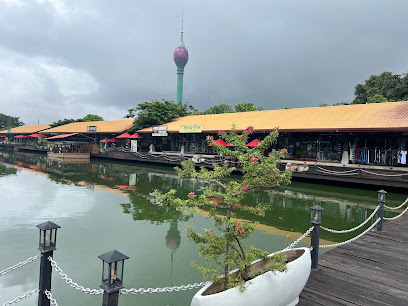
Galle Face Green
Explore Galle Face Green, Colombo's vibrant urban park by the sea, where culture, cuisine, and relaxation meet in a stunning coastal setting.

Colombo Lotus Tower
Discover the breathtaking views and cultural richness at Colombo Lotus Tower, Sri Lanka's iconic landmark and tallest structure.
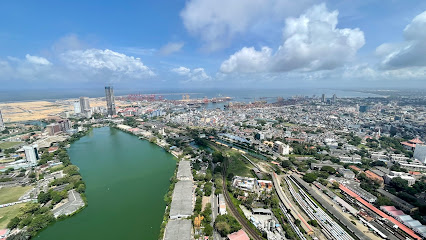
Gangaramaya Park
Experience the tranquility of Gangaramaya Park in the heart of Colombo, a perfect blend of nature and culture for every traveler.
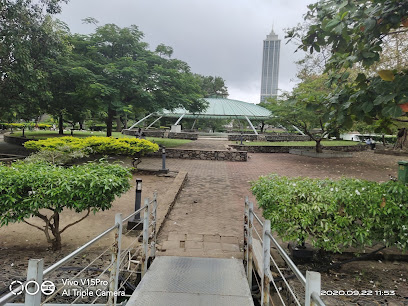
Colombo Galbokka Lighthouse
Discover the charm of Colombo at the Galbokka Lighthouse, a historic landmark offering stunning views and a glimpse into the city's maritime heritage.
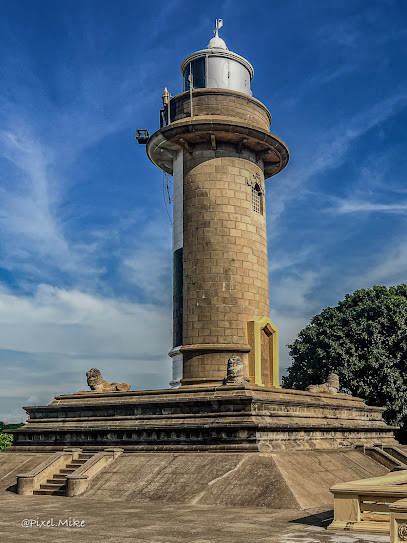
Sambodhi Pagoda Temple
Discover the serene beauty and rich cultural heritage of Sambodhi Pagoda Temple, a must-visit Buddhist sanctuary in the heart of Colombo.
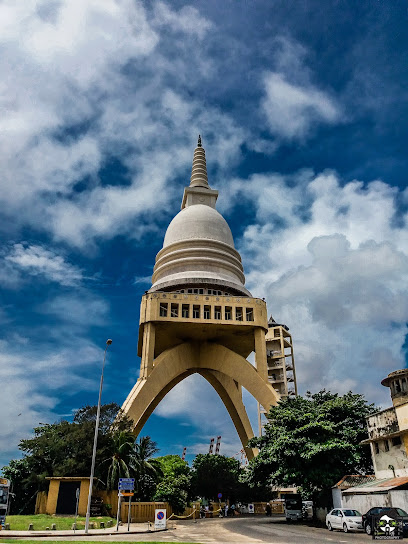
Gamini Hall Junction
Discover the vibrant history and local culture at Gamini Hall Junction, a bustling landmark in the heart of Colombo, Sri Lanka.
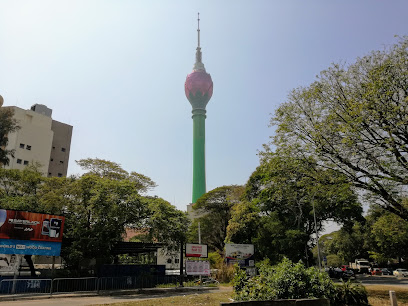
PANCHIKAWATTA පංචිකාවත්ත பஞ்சிகாவத்தை
Explore Panchikawatta, a historical landmark in Colombo, where vibrant culture and captivating architecture come together for an unforgettable experience.
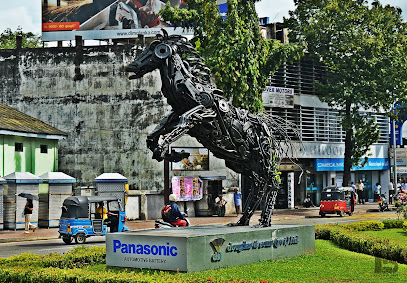
Colombo Fort Old Lighthouse & Clock Tower
Discover the rich history and stunning architecture at Colombo Fort's Old Lighthouse and Clock Tower, a must-visit landmark in Sri Lanka.
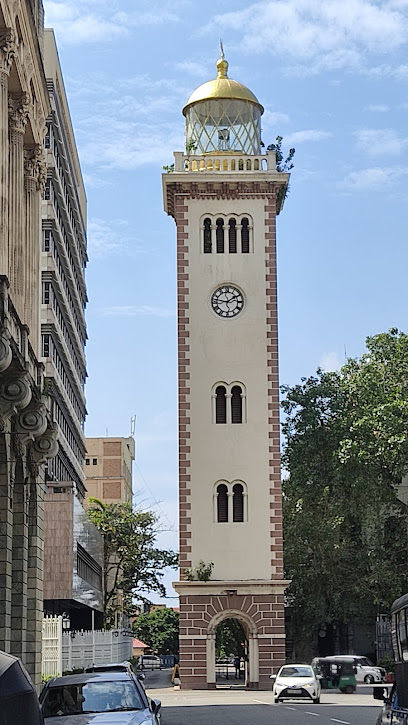
Khan Clock Tower
Discover the timeless charm of Khan Clock Tower, Colombo's historical landmark that echoes the city's vibrant culture and rich heritage.
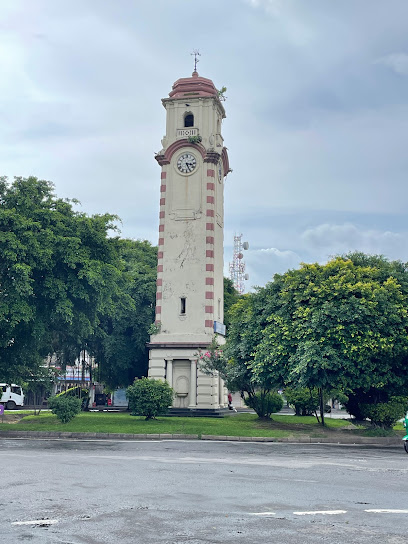
The Central Point - Economic History Museum
Discover the vibrant economic history of Sri Lanka at The Central Point - Economic History Museum in Colombo, where the past meets the present.
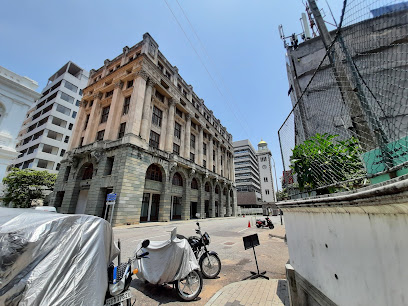
Kayman's Gate - Dutch Bell Tower, කයිමන් දොරකඩ
Discover Kayman's Gate, the historic Dutch Bell Tower in Colombo, where rich heritage meets vibrant city life, offering a glimpse into Sri Lanka's colonial past.
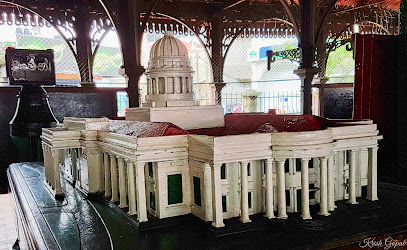
St. Peter's Church Fort
Discover the architectural beauty and serene atmosphere of St. Peter's Church Fort, a must-visit Anglican church in the heart of Colombo.

Mount Mary
Discover the architectural beauty and spiritual significance of Mount Mary, a historical landmark in the heart of Colombo, Sri Lanka.
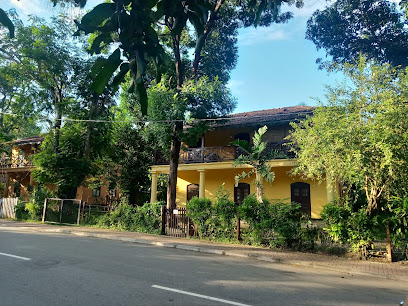
King Sri Wickrama Rajasinghe's Prison Room
Discover the rich history of Sri Lanka at King Sri Wickrama Rajasinghe's Prison Room, a significant landmark in Colombo reflecting the nation's royal heritage.
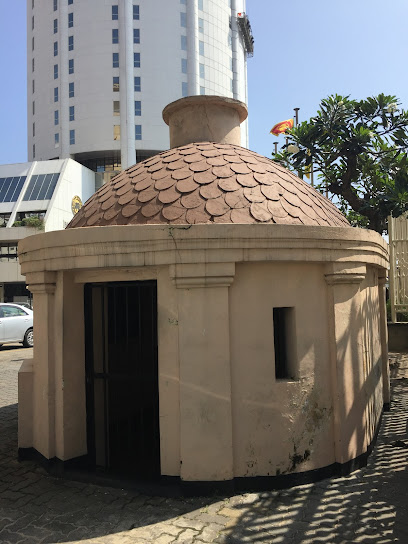
Unmissable attractions to see
Colombo Port Maritime Museum
Explore Sri Lanka's maritime legacy at the Colombo Port Maritime Museum, where history meets the sea's captivating stories.
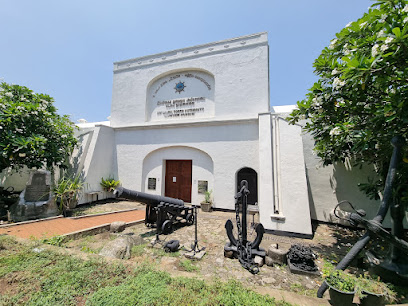
Colombo Walks
Explore Colombo's rich heritage and vibrant culture with Colombo Walks, your gateway to unforgettable experiences in Sri Lanka's capital.
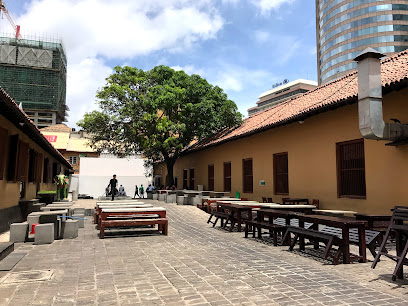
Colombo City Walks
Discover the heart of Colombo through captivating walks that blend culture, history, and modern vibrancy in Sri Lanka's bustling capital.
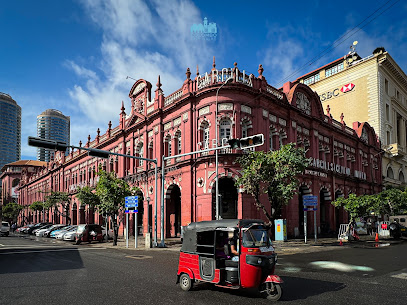
Essential places to dine
Light House Galley
Savor exquisite seafood and authentic Sri Lankan flavors at Light House Galley in Colombo, where culinary delight meets stunning coastal views.
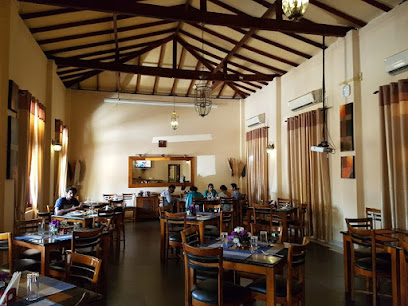
Harpo's Colombo Fort Cafe
Experience exquisite Mediterranean cuisine at Harpo's Colombo Fort Cafe amidst the historic charm of Colombo's Old Dutch Hospital Complex.
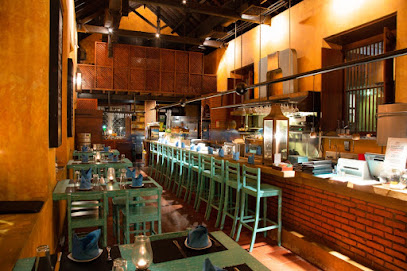
The Exchange Restaurant
Experience the vibrant flavors of Sri Lanka at The Exchange Restaurant, where local cuisine meets international flair in a lively setting.
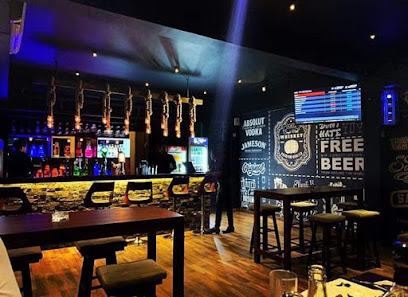
Ocean Seafood Restaurant
Discover an exquisite seafood dining experience at Ocean Seafood Restaurant in Colombo, where fresh flavors meet stunning ocean views.
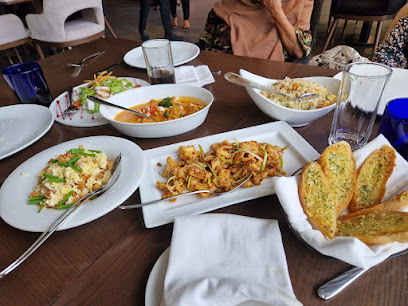
Fort Central Bar & Kitchen
Experience Sri Lankan hospitality at Fort Central Bar & Kitchen – where delicious food meets vibrant nightlife in Colombo.
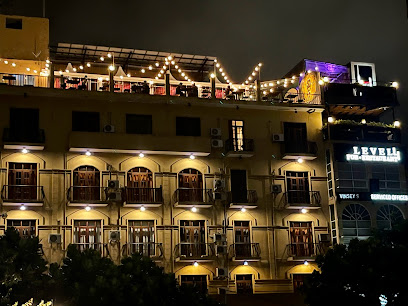
TORENA CAFE & RESTAURANT
Discover culinary delights at Toreena Cafe & Restaurant in Colombo - where local flavors meet international cuisine.
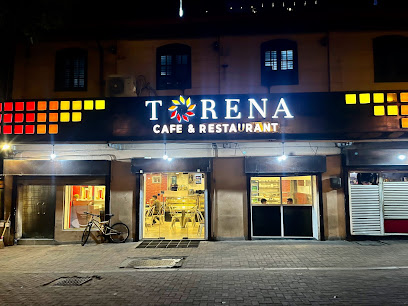
Oldfort Cafe
Experience authentic Sri Lankan flavors at Oldfort Cafe in Colombo's bustling World Market Shopping Complex.
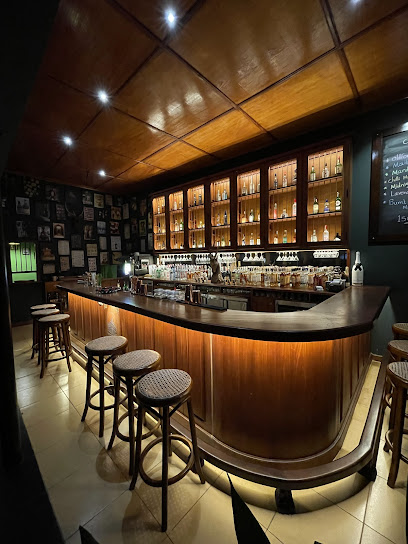
Ratnagiri Restaurant & Bar
Discover authentic Sri Lankan cuisine at Ratnagiri Restaurant & Bar, where every dish tells a story.
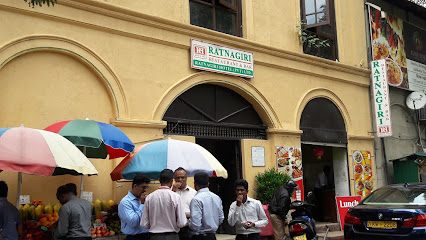
Makrin Restaurant and Bakers
Discover authentic Sri Lankan flavors at Makrin Restaurant and Bakers – a must-visit culinary destination in Colombo.
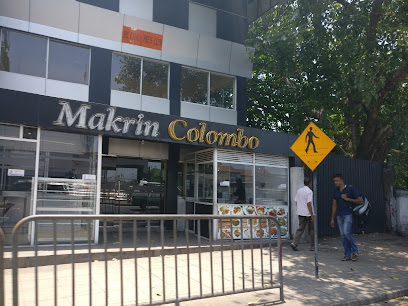
Panorama Roof Top Restaurant
Discover panoramic views and delightful flavors at Colombo's Panorama Roof Top Restaurant – where every meal is an unforgettable experience.
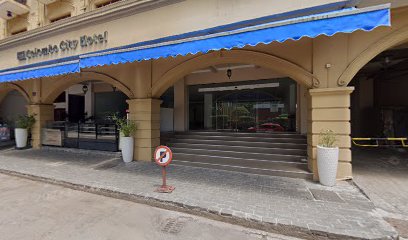
Markets, malls and hidden boutiques
Laksala
Explore authentic Sri Lankan handicrafts at Laksala, Colombo's premier craft store offering a rich cultural shopping experience.
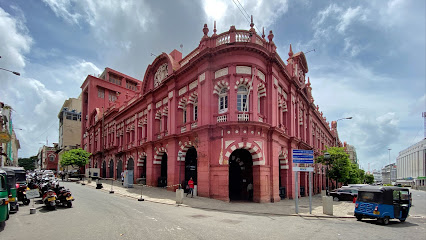
Luv SL Odel
Explore Luv SL Odel for authentic Sri Lankan souvenirs and unique mementos in the heart of Colombo's historic Old Dutch Hospital Complex.
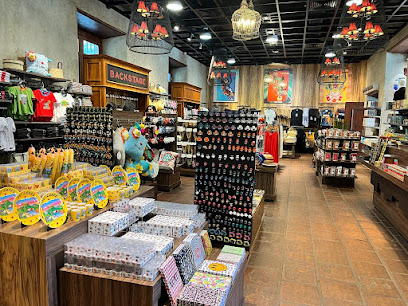
The New Chinese Shop
Explore unique clothing at The New Chinese Shop in Colombo, where traditional and modern styles meet for a vibrant shopping experience.
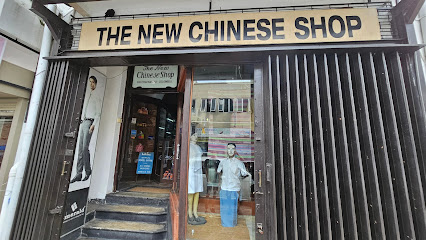
Vogue boutique 93
Discover the latest trends in women's fashion at Vogue Boutique 93, the ultimate shopping destination in Colombo's vibrant heart.

Ceylonchoice
Discover the essence of Sri Lanka at Ceylonchoice, your go-to gift shop for authentic handicrafts and unique souvenirs in Colombo.
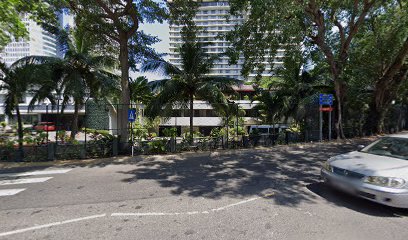
Victoria Antiques
Discover unique vintage treasures at Victoria Antiques, Colombo's charming antique store showcasing Sri Lanka's rich heritage.
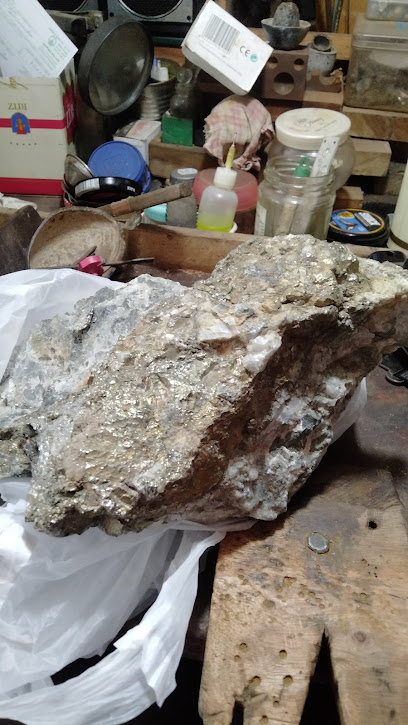
Go Boutique
Discover unique local crafts and fashion at Go Boutique in Cinnamon Lakeside Hotel, Colombo – a must-visit shopping destination for travelers.
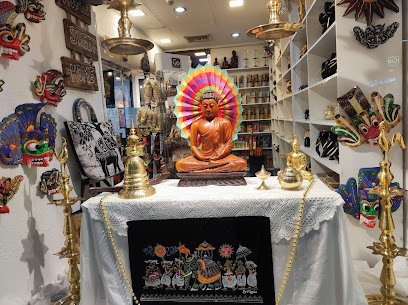
Thifsamrt Online Store
Discover unique gifts, stylish clothing, and baby essentials at Thifsamrt Online Store in Colombo, a must-visit shopping destination for tourists.

The Fancy Shop
Explore a chic selection of unique accessories at The Fancy Shop, where local craftsmanship meets trendy fashion in a vibrant atmosphere.

Rubens
Explore Rubens Souvenir Store in Colombo for unique handcrafted souvenirs that embody the spirit of Sri Lanka's rich culture and artistry.
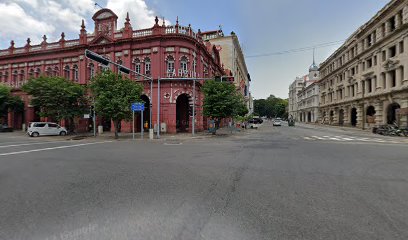
Essential bars & hidden hideouts
Taphouse by RnR
Experience the vibrant nightlife at Taphouse by RnR in Colombo, where craft beers and delicious food meet a lively atmosphere.
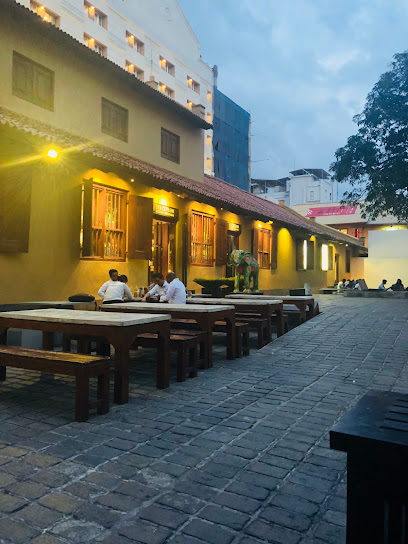
Honey Beach Club
Discover paradise at Honey Beach Club, where tropical vibes meet exquisite dining and stunning ocean views in the heart of Colombo.
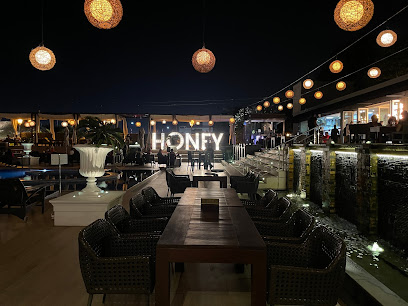
The REPUBLK
Experience the vibrant nightlife at The REPUBLK, Colombo's premier bar for craft cocktails, delicious bites, and live entertainment.
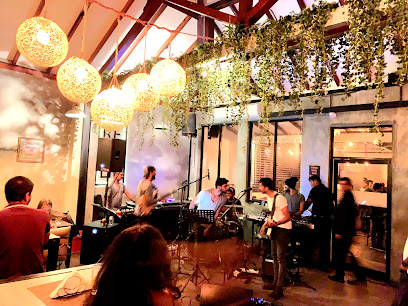
Dutch Pub Colombo
Discover the vibrant nightlife at Dutch Pub Colombo, where local flavors meet a lively atmosphere in the heart of the city.
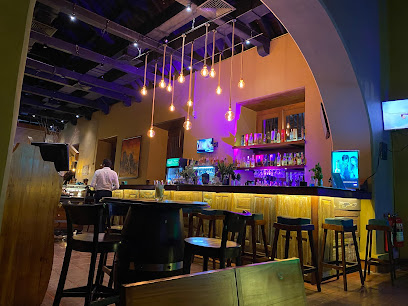
The Exchange Restaurant
Discover vibrant flavors and a lively atmosphere at The Exchange Restaurant in Colombo, your go-to spot for local cuisine and international delights.
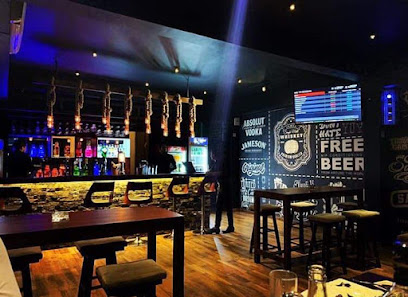
Fort Central Bar & Kitchen
Discover the lively atmosphere of Fort Central Bar & Kitchen, a premier pub and restaurant in Colombo, offering a delightful menu and vibrant nightlife.
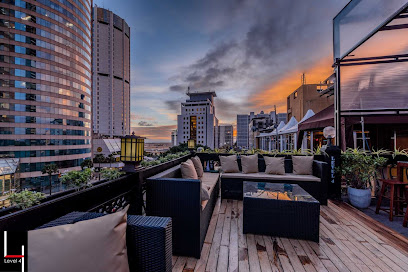
& Co Pub and Kitchen
Discover the vibrant flavors of Sri Lanka at & Co Pub and Kitchen, a top dining spot in the heart of Colombo, perfect for food enthusiasts.
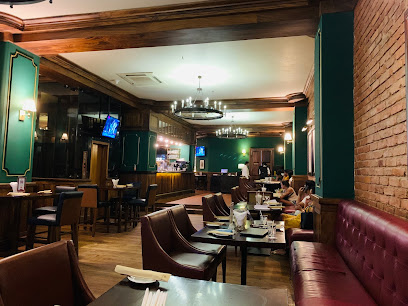
The Joint Pub and Grill
Discover a vibrant culinary experience at The Joint Pub and Grill, Colombo's go-to spot for delicious food, drinks, and local culture.
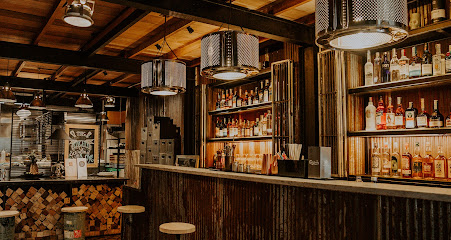
Sky Lounge - The Kingsbury
Experience breathtaking views and exquisite cocktails at Sky Lounge, Colombo's premier rooftop bar, perfect for an unforgettable night out.
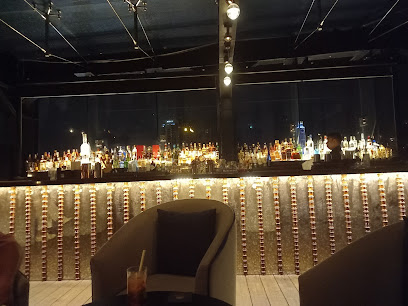
Coache's Club
Discover the vibrant nightlife of Colombo at Coache's Club, where great drinks and a lively atmosphere await you.
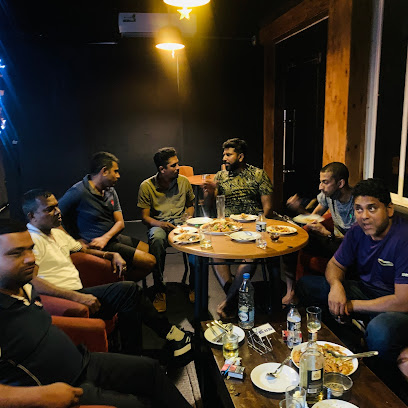
Local Phrases
-
- Helloහායි
[hayi] - Goodbyeසලයුරොව
[salayurova] - Yesඔව්
[ow] - Noනෑ
[nē] - Please/You're welcomeකරුණා
[karunā] - Thank youඔබේ ගිහින්
[obē gihin] - Excuse me/Sorryකරන්න
[karanna] - How are you?ඔයා කොහොමද?
[ōyā kohomada?] - Fine. And you?හොඳයි. ඔයා?
[hōdayi. ōyā?] - Do you speak English?ඔයා ඉංග්රීසි කතා කරනවාද?
[ōyā iṅgrīsi kathā karanvāda?] - I don't understandමම දැන්නේයන්නනේ
[mama dænnēyannane]
- Helloහායි
-
- I'd like to see the menu, pleaseකරුණා, මෙනු බලන්න
[karunā, mēnu balanna] - I don't eat meatමම මස් කමරේන්නේය
[mama mas kamarenne] - Cheers!සුභ උදාව්!
[subha udāva] - I would like to pay, pleaseකරුණා, මම ගෙදනවා
[karunā, mama gedanavā]
- I'd like to see the menu, pleaseකරුණා, මෙනු බලන්න
-
- Help!උක්කා!
[ukka!] - Go away!යන්නය
[yannaya] - Call the Police!පොලිස් දක්ෂම්
[polis daksham] - Call a doctor!වෛරස් දක්ෂම්
[vāras daksham] - I'm lostමම අවධානයා
[mama avadānayā] - I'm illමම අවසන්
[mama avasan]
- Help!උක්කා!
-
- I'd like to buy...කරුණා, මම වෙනවා...
[karunā, mama wēnavā...] - I'm just lookingමම බලමින්නය
[mama balaminna] - How much is it?එය කොහොමද?
[ēya kohomada?] - That's too expensiveඑය ඉක්මන් ගිය
[ēya ikman giya] - Can you lower the price?ඔයා මිල අස් කරනවාද?
[ōyā mila as karanvāda?]
- I'd like to buy...කරුණා, මම වෙනවා...
-
- What time is it?එය කොළඹ කාලයය?
[ēya kolamba kālaya] - It's one o'clockඑය එකක්
[ēya ēkak] - Half past (10)දහයා (දසු)
[dahayā (dasu)] - Morningපාර
[pāra] - Afternoonපොන්
[pon] - Eveningසත්තේ
[satte] - Yesterdayඊයේ
[īyē] - Todayඅද
[ada] - Tomorrowහෙට
[heta] - 1එක
[ēka] - 2දෙක
[dēka] - 3තුන
[thuna] - 4හත්
[hata] - 5පහ
[paha] - 6හය
[haya] - 7හත
[hatha] - 8අට
[ata] - 9නය
[naya] - 10දහ
[daha]
- What time is it?එය කොළඹ කාලයය?
-
- Where's a/the...?හැමදායි ටෙර්...
[hēmadāyi tēr...] - What's the address?එය ලිපේපියේ කුමක්?
[ēya lipēpiyē kumak?] - Can you show me (on the map)?ඔයා මාප් එකට පෙන්වනවාද?
[ōyā māp eka penwanvāda?] - When's the next (bus)?ඊත් අයිත්ස් කව්ද?
[īt āyits kavada?] - A ticket (to ....)එය ටිකට් (... වෙනවාද?)
[ēya tikath (... wēnavāda?)]
- Where's a/the...?හැමදායි ටෙර්...
History of Fort
-
Fort, originally a fortified structure built by the Portuguese in the early 16th century, laid the groundwork for European colonial influence in Sri Lanka. The Portuguese constructed a small fort in 1518 to secure their trade routes. The site later became a strategic point for the Dutch, who captured it in 1656, and subsequently the British in the late 18th century, transforming it into a bustling center of administration and commerce.
-
Under Dutch control, Fort became a significant trading hub. The Dutch East India Company established a fortification that included a garrison, administrative buildings, and warehouses, which facilitated trade in spices and other goods. The remnants of this period are still visible in the architecture of several buildings, including the iconic Dutch Hospital, which now serves as a vibrant shopping and dining precinct.
-
The British took control of Fort in 1796, and the area underwent significant development. They expanded the fortifications and established various governmental institutions. This period saw the construction of notable structures such as the General Post Office and the Old Parliament Building, which reflect the colonial architectural style and remain prominent landmarks today.
-
During World War II, Fort's strategic location made it a vital military base for the British. The area was fortified, and military installations were established to protect against potential threats in the Indian Ocean. The war brought an influx of military personnel and resources, further shaping the urban landscape of Fort.
-
Following Sri Lanka's independence in 1948, Fort continued to evolve as an urban center. The area became a focal point for commercial activities, with numerous banks, retail outlets, and corporate offices establishing their presence. The post-independence era also saw a resurgence of cultural identity, with local festivals and events celebrating Sri Lanka's rich heritage, contributing to the dynamic atmosphere of Fort.
Fort Essentials
-
Fort is located in the heart of Colombo and is easily accessible from other neighborhoods. The Colombo Fort Railway Station offers train services connecting to major cities in Sri Lanka, including Kandy and Galle. From the Bandaranaike International Airport, you can take a taxi or an airport shuttle to Fort, which takes about 30-45 minutes depending on traffic. Public buses also operate from various parts of Colombo to Fort, with the main bus stop located near the railway station.
-
Fort is a compact neighborhood, making it easy to explore on foot. If you prefer public transport, buses and tuk-tuks are readily available. The Colombo Fort Railway Station allows for convenient train travel to other parts of the city and beyond. For a unique experience, consider renting a bicycle to navigate the area and enjoy the coastal views along Galle Face Green.
-
Fort is generally safe for tourists, but like any urban area, it is advisable to remain vigilant. It is best to avoid walking alone at night, especially in less populated areas like the streets behind the railway station. While violent crime is rare, petty theft can occur, particularly in crowded markets and tourist hotspots. It’s wise to keep your belongings secure and be cautious when using your phone in public.
-
In case of an emergency, dial 119 for police assistance or 110 for fire services. For medical emergencies, the Sri Jayawardenepura General Hospital is the nearest major hospital. It's advisable to have travel insurance that covers medical emergencies. Pharmacies are available throughout Fort for minor health issues, and many have English-speaking staff.
-
Fashion: Do dress modestly when visiting religious sites. Avoid shorts and sleeveless tops. Religion: Do respect local customs; remove shoes when entering temples. Public Transport: Do give up your seat to elderly passengers. Don't eat or drink on public transport. Greetings: Do greet with a smile and a nod. A handshake is common among men. Eating & Drinking: Do try local dishes like kottu and hoppers. Don’t refuse food offered by locals, as it's seen as impolite.
-
To experience Fort like a local, visit the bustling Pettah Market, where you can find everything from spices to textiles. Engage with local vendors, who are often eager to share their stories. Don’t miss the chance to enjoy sunset at Galle Face Green, where you can mingle with locals enjoying street food. For a unique cultural experience, check if there are any local festivals or events happening during your visit.
-
When interacting with locals, it’s customary to use both hands when giving or receiving items, as a sign of respect. Always address individuals using appropriate titles and surnames unless invited to use their first name. Be mindful of public displays of affection, which may be frowned upon in more conservative settings.
-
Fort offers a variety of dining options, from street food stalls to upscale restaurants. Don't miss trying local specialties like 'kottu roti' and 'string hoppers.' Always drink bottled water to avoid any health issues, and be cautious with ice in drinks unless you are sure it's from a safe source.
Trending Landmarks in Fort
-
Pettah Floating Market
-
Galle Face Green
-
Colombo Lotus Tower
-
Gangaramaya Park
-
Colombo Galbokka Lighthouse
-
Sambodhi Pagoda Temple
-
Gamini Hall Junction
-
PANCHIKAWATTA පංචිකාවත්ත பஞ்சிகாவத்தை
-
Colombo Fort Old Lighthouse & Clock Tower
-
Khan Clock Tower
-
The Central Point - Economic History Museum
-
Kayman's Gate - Dutch Bell Tower, කයිමන් දොරකඩ
-
St. Peter's Church Fort
-
Mount Mary
-
King Sri Wickrama Rajasinghe's Prison Room
Nearby Cities to Fort
-
Things To Do in Negombo
-
Things To Do in Bentota
-
Things To Do in Hikkaduwa
-
Things To Do in Kandy
-
Things To Do in Nuwara Eliya
-
Things To Do in Galle
-
Things To Do in Unawatuna
-
Things To Do in Mirissa
-
Things To Do in Ella
-
Things To Do in Matara
-
Things To Do in Sigiriya
-
Things To Do in Anuradhapura
-
Things To Do in Polonnaruwa
-
Things To Do in Trincomalee
-
Things To Do in Kanyakumari









